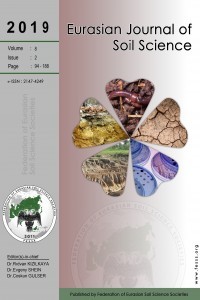
Eurasian Journal of Soil Science
Yazarlar: Luiz Felippe SALEMİ, Rafael Pires FERNANDES, Robson Willians Da Costa SİLVA, Lara Gabrielle GARCİA, Jorge Marcos De MORAES, Juliano Daniel GROPPO, Luiz Antonio MARTİNELLİ
Konular:Fen
DOI:10.18393/ejss.629344
Anahtar Kelimeler:Inceptisols,Sampling,Variation,Water movement
Özet: There have been a number of studies dealing with soil hydraulic properties. Yet, there is a poor discussion on the number of samples necessary to represent such variables that usually vary orders of magnitude in space. In the present paper, we examine the adequate number of samples for two soil saturated hydraulic conductivity (Ksat) data sets: (1) normal distribution (a 40 year-old pasture) and (2) non-normal distribution (primary forest). To assess the adequate number of samples in each case, we used for normal distribution, an statistical criterion of standard deviation lower than 5% compared to a high sampling effort (n = 25) as an indicative of a proper representation of Ksat variability. In the case of non-normal distribution, we used the same criterion but using median absolute deviation (a non-parametric statistics). Both data sets were available in Salemi et al. (2013) and were Ksat measured at 0.15 m soil depth for medium-textured inceptisols in São Paulo State, Brazil. For each data set, we simulated 10 ‘new’ samplings in which we calculated mean and standard deviation from sample 1 to 25 (for normal data) and median and median absolute deviation (for non-normal data). We found that, on average, at least 17 to 22 samples had to be collected to meet the adopted criterion for normal data whereas 20 to 25 had to be collected for non-normal data. Such numbers of samples exceed those used in a number of papers. Additional examples of this method with a light modification are given to establish number of samples in new study areas as well as to estimate number of samples when comparing two (or more) land-uses. Simple and practical procedures like those presented here could estimate the number of samples that adequately represents soil hydraulic properties variability.